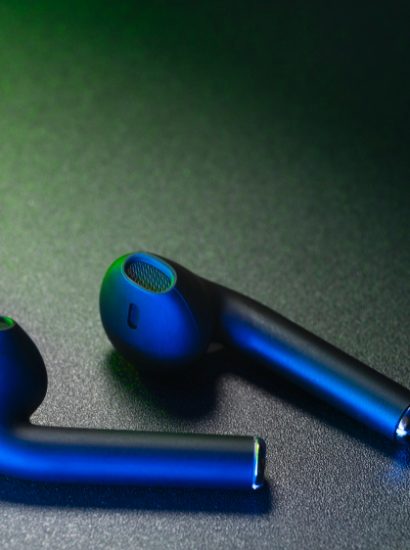Tennis grip is one of the most fundamental aspects of mastering the game. The way you hold your racket can significantly impact your control, power, and ability to execute shots effectively. Whether you’re a beginner or an experienced player, understanding the nuances of different tennis grips is key to elevating your game. This comprehensive guide will walk you through the basics, types, and secrets to perfecting your grip for peak performance.
Understanding the Basics of Tennis Grips
A good grip is the foundation of a strong tennis game. Let’s dive into what makes it so crucial.
What Is a Tennis Grip?
A tennis grip refers to the way you hold the racket handle during play. It determines how the racket meets the ball and influences the angle, spin, and power of your shots. The grip isn’t a one-size-fits-all solution—it varies depending on the type of shot, your playing style, and the court surface.
How Grip Influences Performance and Control
The correct grip enhances:
- Shot Accuracy: Better control of the racket face results in precise ball placement.
- Power Generation: A strong grip allows you to transfer energy effectively for powerful shots.
- Spin Application: Different grips make it easier to generate topspin or slice on the ball.
- Comfort: The right grip minimizes strain, preventing injuries like tennis elbow.
Types of Tennis Grips
Choosing the right grip is crucial for executing specific shots. Here are the most common types:
Eastern Grip: Ideal for Beginners
The Eastern grip is straightforward and easy to learn, making it ideal for new players. To achieve it, place the base knuckle of your index finger on the third bevel of the racket handle. This grip provides a natural angle for forehands, offering a good balance of power and control.
Best for:
- Forehands
- Flat shots
Continental Grip: The All-Rounder
The Continental grip is versatile and often used for serves, volleys, and slices. Place the base knuckle of your index finger on the second bevel. This grip is a staple for net play and defensive strokes.
Best for:
- Serves
- Volleys
- Slice backhands
Western Grip: For Aggressive Baseline Players
Aggressive baseline players prefer the Western grip, which maximizes topspin. Place your hand on the fifth bevel, allowing the racket face to close more naturally during the swing.
Best for:
- Heavy topspin shots
- Baseline rallies
How to Choose the Right Grip
Selecting the right grip depends on various factors. Here’s how to make the best choice:
Factors to Consider
- Hand Size: Players with larger hands might prefer grips that provide more surface area for better control.
- Playing Style: Aggressive players often gravitate toward grips like the Western for maximum topspin, while all-rounders may prefer the Continental.
- Court Surface: On slower clay courts, grips like the Western are advantageous for generating spin, while faster surfaces might favor grips like the Eastern for quick response.
Trying and Adjusting for Comfort
Experimenting is key to finding your ideal grip. Practice hitting with different grips during training sessions to identify which feels the most natural and effective. Over time, small adjustments can help fine-tune your grip for maximum comfort and performance.
Tips for Perfecting Your Tennis Grip
Even experienced players can benefit from refining their grip. These tips can help:
Common Mistakes to Avoid
- Holding the Racket Too Tightly: A firm but relaxed grip prevents muscle fatigue and allows better control.
- Incorrect Finger Placement: Ensure the base knuckle of your index finger is aligned with the correct bevel for the chosen grip.
- Ignoring Grip Size: Using a racket with the wrong handle size can lead to discomfort and errors.
Exercises and Drills to Improve Grip Strength and Technique
- Grip Squeezes: Use a tennis ball or grip strengthener to build hand strength.
- Wall Drills: Practice forehands and backhands against a wall to focus on maintaining a steady grip.
- Shadow Swings: Perform swings without hitting the ball to practice transitioning between grips smoothly.
Conclusion
Mastering your tennis grip is an essential step in improving your game. Whether you’re smashing forehands with an Eastern grip or slicing serves with the Continental, understanding the role of your grip can dramatically elevate your performance on the court. Don’t be afraid to experiment, practice diligently, and seek advice from seasoned players or coaches. With time and effort, you’ll find the grip that works best for you, unlocking your full potential as a tennis player.
FAQs
1.What is the best tennis grip for beginners?
The Eastern grip is ideal for beginners because it offers a natural and easy-to-learn position for forehands.
2.Can I use different grips for different shots?
Yes, advanced players often switch grips mid-game to suit specific shots, such as using the Continental grip for volleys and the Western grip for topspin forehands.
3.How do I know if my grip size is correct?
Grip size can be determined by the space between your palm and fingers when holding the racket. A gap the width of your index finger is usually optimal.
4.Why is grip strength important in tennis?
Grip strength enhances control, prevents injuries, and helps you execute shots with power and precision.
5.Can using the wrong grip cause injuries?
Yes, an incorrect grip can lead to strain, particularly in the wrist and forearm, increasing the risk of tennis elbow and other injuries.
Also read: 10 Reasons to Visit Phoenix Leeds: A Vibrant Gem of the City









